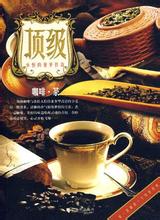Ecuador Santa Cruz Manor Coffee with a light grassy taste Introduction to the region
Ecuador is located in South America, and the equatorial line runs through the country, so Ecuador is also known as the "equatorial country". Ecuador's superior geographical location, fertile soil and special climatic conditions have created a superior natural environment for coffee cultivation in the country. Ecuador is one of the few countries in the world that can produce both Arabica and Robusta coffee beans. Creative coffee made from Ecuadorian coffee beans with unique flavor is also popular with consumers. Mr. Veniso, the champion of the 2014 Ecuador Coffee Competition, won the Ecuador Coffee Competition with his creative formula. One espresso has a fresh and unique taste with mint grass from the Amazon, while the other adds "Rolls-Royce in the Rose" Ecuadorian rose petals that are so fragrant that coffee lovers can't stop talking about Ecuadorian coffee, so they have to mention the organic coffee in Ecuador's Galapagos Islands. The Galapagos Islands, a famous tourist attraction, has been declared as a "World Natural Heritage" by the United Nations Educational, Scientific and Cultural Organization (UNESCO). It is extremely rich in products, and organic coffee is one of the unique ones. With its unique ecological environment such as fertile volcanic soil and microclimate, coupled with its cultivation without any chemical fertilizers and pesticides, organic coffee in the Galapagos Islands is recognized as a natural green boutique coffee. This naturally grown coffee has a mild taste, with hints of grass, flowers and caramel, and is highly sought after by businessmen and coffee lovers. Ecuador is the highest Arabica coffee plantation in the world. Since the coffee tree was first introduced into Ecuador in 1875, the quality of its coffee has remained unchanged for 100 years, especially the coffee harvested in early June every year, which is called "the best coffee in the world". Ecuadorian coffee beans are divided into Galapagos and Segante, both of which have large particles and heavy weight. In particular, the unique geographical conditions of the Galapagos Islands give coffee beans excellent genes that are superior to those of other producing areas, and its high quality comes from the absence of any chemical agents when growing. As Ecuador's land suitable for Arabica coffee trees is gradually decreasing, Galapagos coffee is even more valuable as the world dessert champion in 1995 and the European dessert champion in 2000, Mr. Marcolini's philosophy of success is absolute respect and dedication to ingredients. Ten years ago, he decided to be a great chocolate maker, searching for the best quality cocoa beans from all over the world, finding the roots of chocolate and releasing the true taste of chocolate. All the products sold in Marcolini stores, whether they are chocolates, almond cakes, jam and caramel, are made in Marcolini Workshop and are pure in taste and come from the original cocoa beans. The Marcolini brand has 14 cocoa beans from different regions, led by Ecuador, followed by Brazil, Cuba and so on. Why did Mr. Marcolini choose Ecuadorian cocoa beans to make the world's top delicious chocolates? Here is a set of numbers to give you the answer. This comes from the charm of aromatic cocoa. Only 5% of the world's cocoa production is aromatic cocoa beans, which can make mouthwatering delicacies. 63% of the precious 5% are from Ecuador. Due to the unique geographical and climatic environment, 80% of Ecuador's cocoa beans belong to this aromatic type.
So far, the most precious chocolate in the world is To'ak, which costs as much as $260 for a 1.5oz bar. And this chocolate is made from Ecuadorian cocoa beans.

Important Notice :
前街咖啡 FrontStreet Coffee has moved to new addredd:
FrontStreet Coffee Address: 315,Donghua East Road,GuangZhou
Tel:020 38364473
- Prev

Introduction to the characteristics of coffee flavor and taste of Panamanian jadeite manor with strong sweetness
Panama is a small country located in the center of the American continent. The waters of the Atlantic and Pacific oceans flood its beaches. Panama is located at 9 degrees north latitude, the meeting point of the Central Mountains, where Mount Baru, one of the highest volcanoes in Central America, is located. Baru volcano has an altitude of more than 11400 feet, and the land around it is rich in nutritious and fertile soil, which is unique to Panama.
- Next

Introduction to the flavor and taste of Hassanda Coffee Garden, which can be made into high-quality mixed coffee.
After entering Ecuador from Colombia, the Andes is divided into the eastern and western Cordillera mountains, with a high plateau in the north and a low plateau in the south, with an average elevation of between 2500 meters and 3000 meters. The Andes run through the middle of the border. The ridges crisscross, dividing the plateau into more than ten intermountain basins. The most important are the Quito basin and the Cuenca basin in the south. There are many volcanoes and earthquake frequency in the territory.
Related
- Does Rose Summer choose Blue, Green or Red? Detailed explanation of Rose Summer Coffee plots and Classification in Panamanian Jade Manor
- What is the difference between the origin, producing area, processing plant, cooperative and manor of coffee beans?
- How fine does the espresso powder fit? how to grind the espresso?
- Sca coffee roasting degree color card coffee roasting degree 8 roasting color values what do you mean?
- The practice of lattes: how to make lattes at home
- Introduction to Indonesian Fine Coffee beans-- Java Coffee producing area of Indonesian Arabica Coffee
- How much will the flavor of light and medium roasted rose summer be expressed? What baking level is rose summer suitable for?
- Introduction to the characteristics of washing, sun-drying or wet-planing coffee commonly used in Mantenin, Indonesia
- Price characteristics of Arabica Coffee Bean Starbucks introduction to Manning Coffee Bean Taste producing area Variety Manor
- What is the authentic Yega flavor? What are the flavor characteristics of the really excellent Yejasuffi coffee beans?

